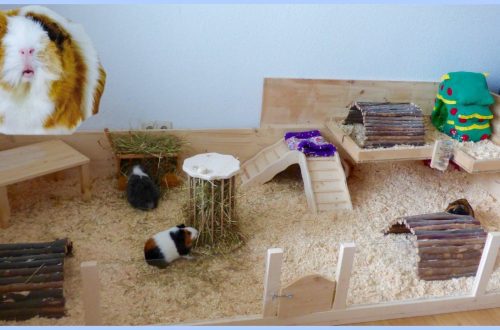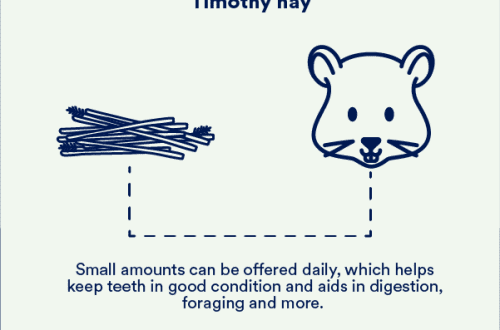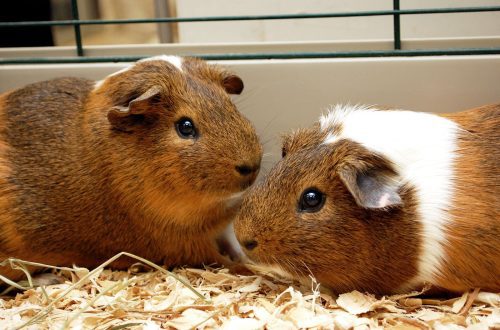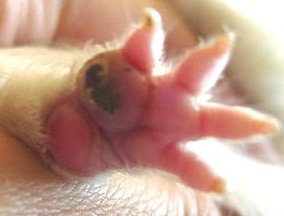
Pododermatitis in guinea pigs (corns, calluses): causes and treatment
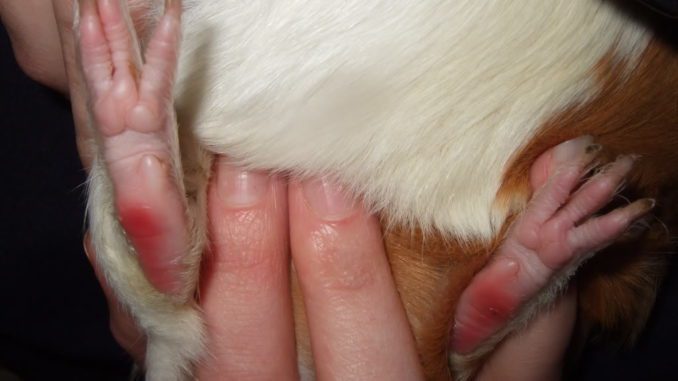
A healthy guinea pig prefers tasty food and active fun games. In case of violation of the conditions of feeding and maintenance, various diseases occur in cheerful rodents. The animal becomes lethargic, inactive and refuses food to the point of exhaustion. One of these pathologies is pododermatitis, which can be identified by the formation of characteristic calluses in a guinea pig. The disease is accompanied by severe pain and, if left untreated, can cause the death of a furry animal. Treatment of pododermatitis in guinea pigs is effective only in the initial stages of the disease. If strange growths on the paws, calluses or purulent wounds on the pet’s feet are found, it is necessary to show the animal to a specialist as soon as possible.
Contents
How do you know if a guinea pig has pododermatitis?
Pododermatitis or corns in guinea pigs are manifested by a vivid clinical picture. A small animal can be diagnosed by a person who does not have a special education. A caring owner will definitely pay attention to the following symptoms of the disease when a beloved pet:
- becomes lethargic, inactive, refuses food and favorite treats;
- squeaks, groans, tucks one leg in, limps when moving and tries more to sit in one place;
- losing weight rapidly.
In addition, the paws of the guinea pig swell and peel off, and the skin of the feet turns red and swells. On the paw of the pet, hair falls out, the skin becomes thinner. The rodent develops bleeding ulcers, open wounds, calluses. It can lead to abscesses and fistulas.
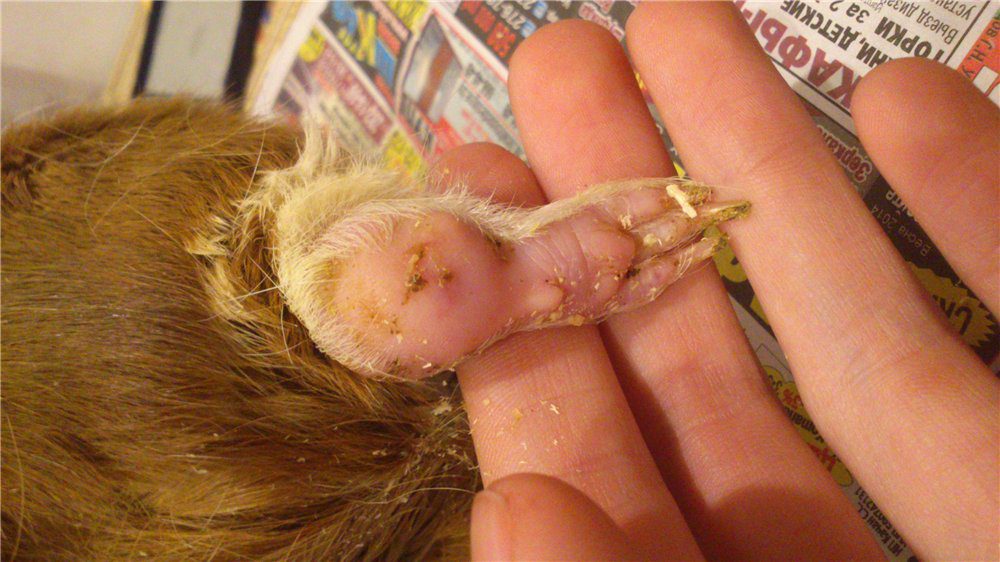
The causative agent of the disease is pathogenic microorganisms. They penetrate under the skin in case of damage to the integrity of the skin or hematogenously – from the inflammatory focus in diseases of the internal organs. The initial stage of the disease is manifested by the formation of small redness, swelling or keratinized areas on the foot pads. In this period, the pathology can be successfully treated at home. It is necessary to apply lotions from a decoction of calendula to diseased areas. A small animal should drink the necessary dose of vitamin C daily. It is important to reconsider the conditions for feeding and keeping a fluffy pet.
Advanced stages or a severe course of the disease, depending on the manifestation of the clinical picture and the general condition of the pet, require long-term medical treatment, and sometimes amputation of the damaged limb.
Why does guinea pig get pododermatitis?
Wild relatives of domestic rodents do not suffer from an insidious disease, which is why it can be done that fluffy pets most often fall ill with a difficult-to-treat disease due to the fault of the owner. The main reasons for the development of pododermatitis in funny animals are:
- rare and poor-quality cleaning of the guinea pig cage. This creates a favorable environment for the reproduction of pathogenic microflora. The pet is forced to sit on a wet substrate soaked in urea and feces. Excrement corrodes the delicate skin of the feet, opening the way for infection;
- excessively long claws, which can cause damage to the integrity of the skin of the pads on the paws;
- the use of predominantly fatty foods in the diet of the animal. This provokes obesity and physical inactivity, due to which there is excessive pressure and injury to the feet;
- limb injuries during fights, falls, bites;
- lack of vitamin C in the diet of an animal;
- keeping guinea pigs on coarse fillers or slatted floors. They contribute to damage to the skin of the feet;
- age. Pathology often occurs in frail older pigs. who lose the ability to move independently;
- an allergic reaction that occurs when using a new filler. It contributes to the formation of calluses on the feet;
- diabetes mellitus that occurs in metabolic disorders or in elderly individuals;
- inflammatory processes in the internal organs of the animal;
- autoimmune diseases.
In pathology, immunity is weakened and secondary bacterial and fungal infections are added.
Such a condition is fraught with the penetration of pathogenic microflora into the lymphatic and circulatory systems, the development of osteomyelitis, sepsis and the death of a beloved animal. The sooner the owner seeks help from a veterinarian, the more likely it is to cure a little friend without irreversible consequences.
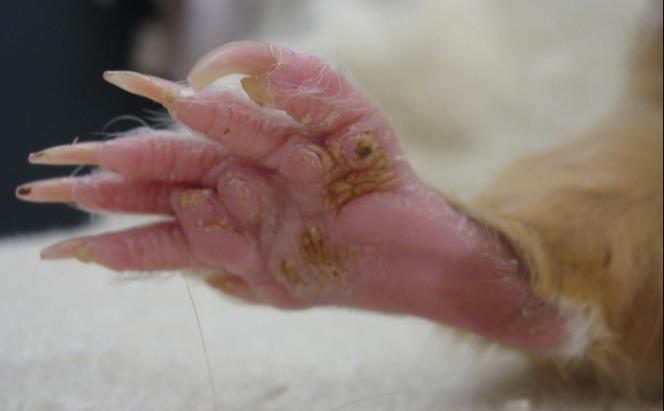
How to treat pododermatitis in a guinea pig?
The treatment of pododermatitis in a furry rodent should be carried out by an experienced veterinarian after a comprehensive examination of the animal using examination, laboratory tests of blood and urine tests and radiography to exclude the development of osteomyelitis.
The specialist prescribes a diet for the guinea pig with an increase in the content of fresh green grass, twigs, vegetables and fruits in the diet, until the sick pet recovers, it is necessary to drink daily 1 ml of a 5% solution of ascorbic acid from an insulin syringe without a needle. A sick animal must be kept on a soft bedding to be changed daily.
To stop the inflammatory process, a course of antibiotic injections is used, most often Baytril, at the same time, after consultation with a specialist, it is recommended to give probiotics to your favorite animal: Vetom, Linex, Bifidumbacterin.
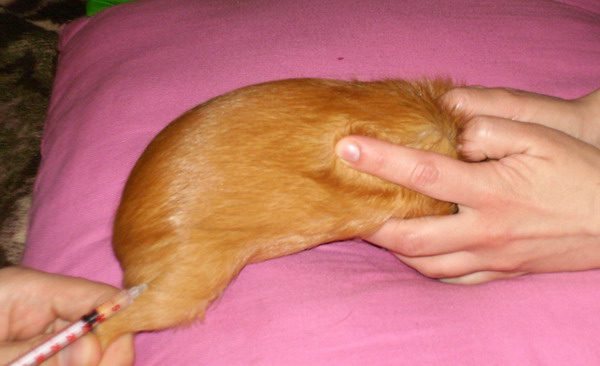
Local anti-inflammatory therapy consists in long-term daily treatment of damaged skin with antiseptic solutions, followed by the use of dressings with anti-inflammatory ointments: Levomekol, Solcoseryl. After removing the inflammatory edema, the skin must be lubricated with zinc ointment, for the same purpose, Dermatol or Alu-Glyn-Spray is used.
With damage to the bones and the development of osteomyelitis, painkillers are prescribed to relieve pain in the guinea pig; in advanced cases, the veterinarian may insist on amputation of the affected limb.
It is better to prevent a painful disease than to cure it. Before acquiring a small animal, the owner of a guinea pig needs to study the rules for feeding and keeping an unpretentious pet. A balanced diet, soft bedding, high-quality daily cleaning and maintaining the hygiene of the animal will help to avoid an unpleasant disease and keep the paws of the fluffy family pet healthy.
Treatment of corns (pododermatitis) in guinea pigs
4.6 (91.3%) 23 votes



